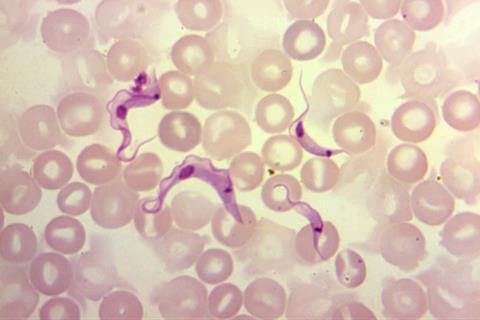An innovative test that combines a DNA extraction system inspired by a modified 3D printer (PrintrLab) with loop-mediated isothermal molecular amplification (LAMP) could be used to detect T. cruzi infection - responsible for Chagas disease - in newborns. This is the conclusion of a proof-of-concept study conducted in the Bolivian Chaco, an endemic area for Chagas disease.

The study was coordinated by the Barcelona Institute for Global Health (ISGlobal), a centre supported by “la Caixa” Foundation, in collaboration with the CEADES Foundation (Bolivia), CONICET-INGEBI (Argentina), AI Biosciences (USA), FIND (Switzerland) and the Mundo Sano Foundation (Argentina).
Vertical transmission
Twenty percent of new cases of Chagas disease are due to vertical (or congenital) transmission. This occurs when an infected mother passes the parasite to her baby during pregnancy. Early detection of the parasite in women and newborns is therefore a public health priority. The problem is the lack of simple, rapid and reliable tests.
In high-income countries like Spain, newborn diagnosis can be done by PCR, but this is an expensive method that requires skilled personnel. In endemic regions, up to two microscopy tests are performed (at birth and at two months), which have low sensitivity and must be followed several months later by a serological test to detect antibodies to the parasite. The number of tests and the time lag between them increases the risk that children will not receive the treatment they need.
“In endemic regions, it would be very useful to have a simple, rapid and sensitive test to detect the parasite in newborns, when treatment is most effective,” explains Julio Alonso Padilla, researcher at ISGlobal.
More sensitive than microscopy
In this study, a team led by Alonso-Padilla evaluated an innovative diagnostic test that combines a simple molecular amplification technique (LAMP) developed by the Japanese company Eiken, with a 3D printer modified to extract DNA from a small blood sample (PrintrLab). The results were compared with those of PCR and the “standard” diagnostic methods (microscopy and serology).
The study included 224 infants born to T. cruzi seropositive mothers and followed for eight months. A total of 23 cases of congenital transmission were detected (nine by microscopy at birth and a further 14 by serology eight months later). LAMP was able to detect 13 of the 23 cases early on (i.e. four additional cases to those detected by microscopy), and PCR was able to detect 14 of the 23 (five additional cases).
“This shows that the sensitivity of PrintrLab-LAMP is higher than that of microscopy and almost equal to that of PCR,” says Alonso-Padilla. The advantage is that PrintrLab should be cheaper than PCR and requires minimal infrastructure.
All treated and cured
Following the country’s guidelines for diagnosis and treatment of congenital Chagas disease, all infected newborns were treated and cured, highlighting the importance of early detection and treatment.
The research team points out that this was a proof of concept to demonstrate the feasibility of the PrintrLab-LAMP test, and that it now needs to be tested on a larger scale and in a larger number of centres. If its potential is confirmed, the test could also be useful for detecting acute infections in adults, or assessing the effectiveness of treatment.







No comments yet